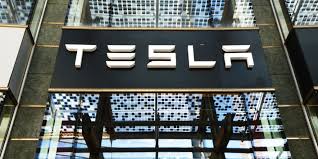How Tesla, Volkswagen and Renault are Vying for Dominance as Europe’s Battle for Electric Cars Heats Up

Europeans have already purchased more electric-powered vehicles than all of last year, new research shows, a hopeful sign that healthy consumer demand for greener cars will outstrip the many shortcomings of Europe’s bumpy transition away from dirty diesel engines.
Through the first seven months of 2019, the number of new registrations for battery-powered electrical vehicles (BEVs) topped 183,000, according to data collected by Berlin-based automotive analyst Matthias Schmidt. The sector is on pace to hit a record 300,000 new BEV registrations this year, cementing Western Europe’s place as the second biggest market for such vehicles behind China. The United States is third.
That’s all the more remarkable considering Europe’s underdeveloped network of electric charging stations, particularly in Southern Europe. The goal is one charging station for every 5-10 BEVs. Despite the relatively low number of e-cars on the road, “we’re not there yet,” Luca de Meo, president of Spanish automaker SEAT, told reporters at the Frankfurt Motor Show.
Still, it’s not too early to see the up-and-coming players. Renault, with its electric plug-in compact model Zoe, and Tesla, on the strength of Model 3, have emerged as the market leaders, Schmidt notes. And this month, the Volkswagen Group has come on strong as it’s begun to take pre-orders for its battery-powered ID.3.
That model is billed as being VW’s first e-vehicle for the masses, and part of a larger $ 33 billion push into BEVs.
Walking through the Frankfurt Motor Show pavilion this week, Schmidt admitted he had a bit of sticker shock glancing at the suggested prices of the electric vehicles on display from the many manufacturers in the hall. “They were all priced somewhere between €29,000 and €35,000,” he said. “It may be a struggle to meet targets.”
Automakers are struggling to find a strategy that works for Europe as strict new emissions targets come into play in January—or face billions in fines. The level of CO2 must be cut to 95 grams per kilometer for 95% of a manufacturer’s fleet cars—down from the current 120.5g average allowance.
The stick hanging over the sector explains the explosion of e-vehicle news coming out of the auto show this week. But the headlines mask a big concern for automakers: how to make money on the electrification push. “These likely profitless vehicles are being shoved to the front of the stage in order to meet CO2 regulations,” says Schmidt.
But as the latest sales figures show, at least there is strong consumer demand. BEVs may account for just 2 percent of overall sales, but the market is growing rapidly even with questions over e-vehicle pricing and the dearth of charging stations.
Next year, thanks in no small part to the new emissions rules, share will grow even further. Volkswagen Group, for one, plans to bring 300,000 new BEVs to market and that it will have six such models on the road by 2022.
Despite the somewhat optimistic signs, VW, for one, will be hedging its bets on the car-buying public. The carmaker is aggressively rolling out car-sharing services in parts of Europe that will overwhelmingly feature battery-powered and electric vehicles. The upside is clear: the more BEVs it gets on the road the less likely it is to pay a hefty emissions fine.
More must-read stories from Fortune:
—Change the World 2019: See which companies made the list
—Solar execs say the game is already over for non-renewable energy
—Why the next recession may feel very different than 2008
—How Harvard’s most popular class became a “lifestyle”
—Who is running for vice president in 2020? These are the contenders


